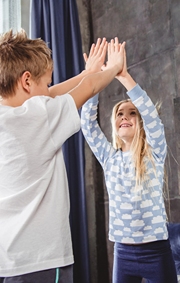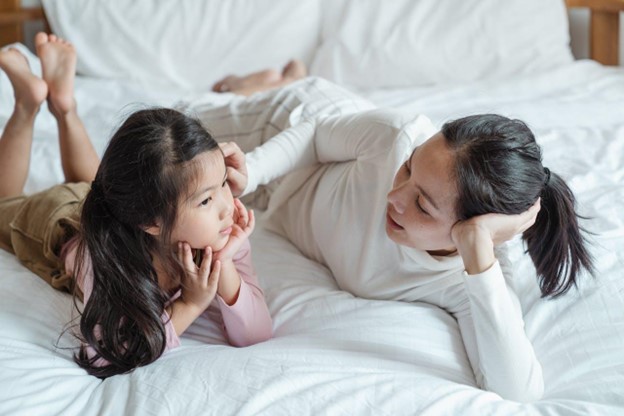Understanding the Fight or Flight Test: What It Reveals About You
In the modern world, stress is a constant companion. Whether it’s a looming deadline, an unexpected event, or even just a crowded commute, our bodies react instinctively. This reaction is often described as the “fight or flight” response. But what does this reaction reveal about you? How does it shape your decisions and personality?
Let’s explore the depths of the fight or flight test, understand its implications, and see what it can teach us about ourselves.
What is the Fight or Flight Response?
A stressful or terrifying experience triggers what is known as the ‘fight or flight’ response. Walter Cannon gave the first description of it in the 1920s. The body readies itself to either fight or run when it senses danger.
This response involves various bodily changes, including:
- increased heart rate
- heightened senses
- surge of adrenaline
These changes are meant to give the body a burst of energy and strength, enabling it to either confront or escape the source of stress.
The Science Behind the Response
Understanding the science behind the fight or flight reaction can provide insights into why we react the way we do. The response starts in the amygdala, a tiny region in the brain that processes emotions.
When the amygdala detects danger, it sends a distress signal to the hypothalamus. The hypothalamus then activates the sympathetic nervous system, leading to the release of adrenaline.
Adrenaline has several effects on the body. It increases the heart rate, elevates blood pressure, and boosts energy supplies. These changes prepare the body to either confront the threat or escape from it. Understanding this mechanism can help us manage our reactions better.
You also need to know about what is survival mode. When people enter survival mode, their bodies prioritize immediate survival. This causes many physiological changes.
This can manifest in a variety of ways, such as an increased heart rate, rapid breathing, and a narrowed focus on the immediate situation at hand.
The Role of Evolution
The fight or flight response is deeply rooted in our evolutionary history. Early humans needed this response to survive.
Facing predators or other threats, they had to react quickly to avoid danger. Over time, this response became hardwired into our biology.
Even though modern threats are different, our bodies still react in the same way. This ancient mechanism helps us respond to danger. But it can be triggered by non-life-threatening situations.
Fight or Flight Test Explained
The fight or flight test measures how individuals respond to stress. It usually involves a series of scenarios or questions designed to trigger the response. The test assesses whether a person is more likely to confront the threat (fight) or avoid it (flight).
Taking the fight or flight test can provide valuable insights into your stress response patterns. It can help you understand your natural tendencies and how they influence your behavior.
Why Take the Test?
Taking the fight or flight test can offer several benefits. First, it can help you understand your stress response better. Knowing whether you are more inclined to fight or flee can aid in personal development and decision-making.
Secondly, it can improve your relationships. Understanding how you and those around you respond to stress can lead to better communication and empathy.
Lastly, the test can be a tool for managing stress. By recognizing your patterns, you can develop strategies to cope more effectively.
How to Interpret the Results
Interpreting the results of the fight or flight test involves understanding your dominant response. If you tend to fight, you might confront challenges head-on, show assertiveness, and display resilience. However, you might also struggle with aggression or impatience.
If you tend to flee, you might avoid conflict, seek peaceful resolutions, and show adaptability. On the downside, you might struggle with avoidance or anxiety. Understanding these tendencies can help you leverage your strengths and work on your weaknesses.
Practical Applications of the Test
The fight or flight test can have several practical applications in daily life. For instance, in the workplace, knowing your stress response can help you handle challenging situations better.
If you are a “fighter,” you might excel in crisis management but need to work on diplomacy. If you are a “lighter,” you might need to develop assertiveness but excel in maintaining harmony.
In personal relationships, understanding your response can improve how you handle conflicts. Fighters can work on patience and empathy, while flighters can work on confronting issues directly.
Stress Management Techniques
Regardless of your fight or flight response, managing stress is crucial for your well-being. Techniques such as mindfulness, deep breathing, and physical exercise can help regulate your response. Practicing these techniques regularly can reduce the intensity of your fight or flight reaction.
Mindfulness involves staying present and aware of your thoughts and feelings without judgment. Deep breathing can help calm the nervous system and reduce stress. Physical exercise can release tension and improve mood.
Building Resilience
Building resilience involves developing the ability to cope with stress and adversity. Understanding your fight-or-flight response is the first step. The next step is to build strategies that enhance your resilience.
Setting realistic goals, maintaining a positive outlook, and developing strong relationships can all contribute to resilience. Practicing self-care and seeking professional help when needed are also important.
The Role of Support Systems
Having a strong support system can significantly impact how you handle stress. Friends, family, and colleagues can provide emotional support, practical advice, and a sense of belonging.
Engaging with support groups or seeking professional counseling can also be beneficial. These resources can offer guidance and strategies for managing a stress response test.
Personal Growth and Self-Awareness
Taking the fight or flight response test can lead to personal growth. It can increase your self-awareness, helping you recognize your triggers and patterns.
This self-awareness can lead to better decision-making and improved self care and mental health. It can also empower you to take control of your responses and develop healthier coping mechanisms.
If you’re curious about your own fight or flight response, consider taking the test. It might just reveal new aspects of your personality and help you develop strategies for a healthier, more balanced life.
Exploring the Fight or Flight Test
The fight or flight response is a fundamental part of human nature. By understanding it through the fight or flight test, we can gain valuable insights into our behavior. This understanding can improve our relationships, enhance our stress management skills, and lead to personal growth.










